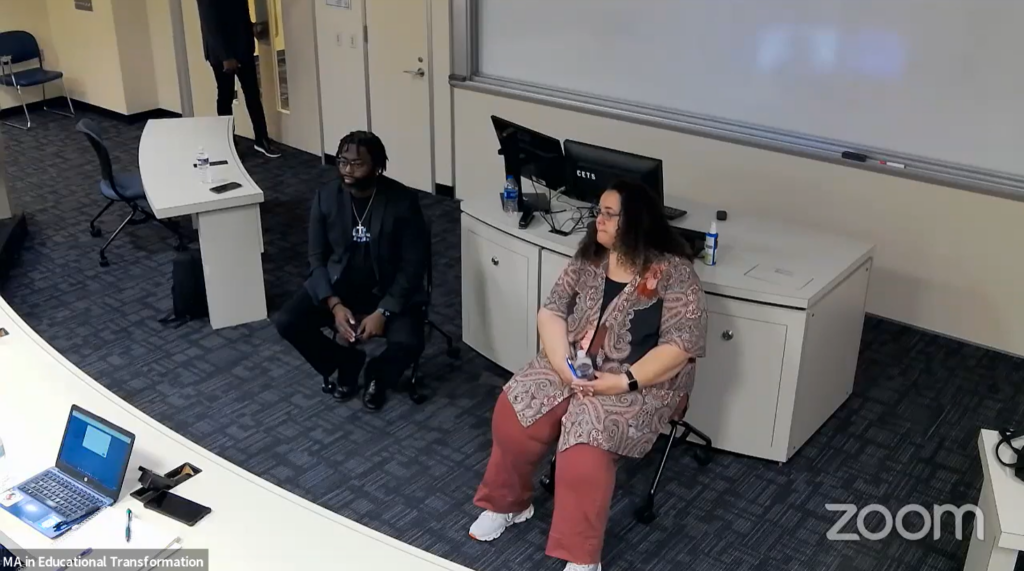Georgetown University’s Masters of Arts in Educational Transformation hosted an informative talk addressing the crisis of decreasing numbers of Black and Brown individuals in the teaching profession.
The Nov. 11 event, titled “Recruiting and Retaining Teachers of Color,” featured Maria Hyler, director of the Washington, D.C. office of the Learning Policy Institute, a think tank focused on educational system research. The event also featured Curtis Lewis, founder and CEO of the Black Male Educators Alliance (BMEA), a network intended to engage and recruit Black teachers to improve educational outcomes for urban youth. The discussion highlighted key challenges faced by Black educators as well as strategies for reforming school environments to be more inclusive.

Currently, Black, Hispanic and Asian American individuals each make up less than one-tenth of all public school teachers across the United States, while 53% of public elementary and secondary school students are not white.
Hyler said the expensive training process required for teachers creates a high barrier to entry, making educational careers inaccessible for many people of color.
“The rising cost of college tuition really keeps people out of the teaching field, and it’s particularly true for teachers of color who are more likely to report that student debt influences their career decisions,” Hyler said at the event.
On average, Black graduates owe $7,400 more in college loans than white students upon graduation. This disparity only increases over time; four years after graduation, Black graduates owe approximately $25,000 more in student loan debt than white graduates.
Lewis said poor treatment of students of color during childhood also disincentivizes their entry into the teaching field in the future.
“One of the things we don’t talk about is that schools are often oppressive institutions for students of color,” Lewis said at the event. “If I’ve been oppressed and traumatized by a K-12 schooling system, why would I want to go back and teach?”
According to Hyler, racial discrimination, microaggressions, a lack of resources and limited autonomy within the classroom are all factors that worsen conditions for teachers of color.
Hyler said employee retainment could be increased through changes in school leadership that aim to uplift teachers of color.
“Administrators set the tone for teaching with learning environments where teachers are part of professional learning communities, receive feedback, have collaboration time, take on leadership roles and engage in shared decision making,” Hyler said. “They can nurture environments where, when there’s an issue of microaggressions and macroaggressions, administrators actually address it and work to have a climate in school that’s inclusive and embracing of all their teachers.”
Hyler said diverse educators can also support the needs of students from underrepresented groups.
“Racial identities are often central to how teachers of color are able to persist and thrive in racially hostile environments,” Hyler said. “In one study, a Latinx teacher in a rural setting experienced a very racially hostile environment, and yet the percentage of her students were mostly Latinx. So she felt that she not only needed to be there for her students to support them in this space but also be a model of how to push back.”
Hiring teachers of color improves the quality of educational spaces for all students, including increased test scores, more consistent attendance and reduced suspensions, according to Hyler.
“We know that students, regardless of their race, benefit from having teachers of color,” Hyler said. “Students are more likely to feel cared about and academically supported when they have teachers of color, and all students can develop the habits and dispositions to live and work in a diverse society by having diverse role models in their classrooms.”
Lewis said diversifying the teaching field begins with long-term solutions; BMEA has implemented an intergenerational mentoring program where high schoolers help teach and tutor elementary students.
“It is important because, one, as an elementary school student, you begin to see somebody who looks like you that’s helping and supporting you,” Lewis said. “Two, as a high school student, it gives you an opportunity to explore teaching as a profession, to understand the joy and benefits of being a teacher.”
According to Lewis, supporting the future of the teaching industry begins with supporting students of color today.
“We have to dismantle school policies that hinder the progression of Black and Brown children,” Lewis said. “They have to see success. We have to do our part in making sure they’re feeling loved, cared for and respected in these school spaces.”




















